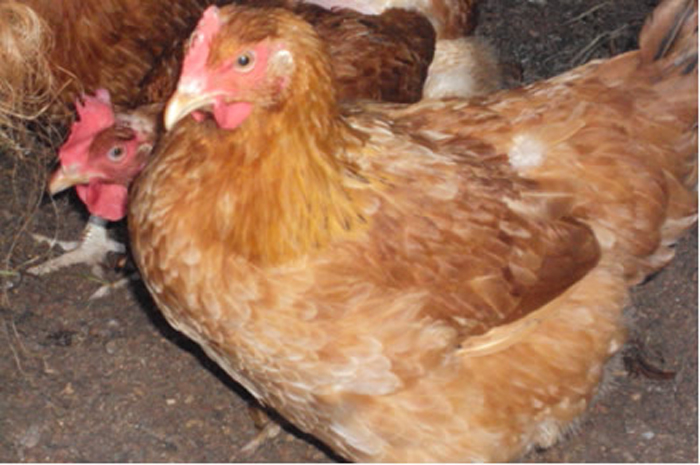Feeding
Birds need feeds that give the necessary elements for body functions, including growth, and egg and meat production. This is a requirement that the free-range production system does not meet adequately. To attain a balanced diet, it is recommended that in addition to scavenging, a farmer should include protein supplements from one of the recommended cheap but quality sources. This can be provided either as a pre-mix or given through cafeteria system. Animals need carbohydrates for supply of energy and heat. In addition to kitchen waste, birds should be given feed rich in energy such as maize, millet, cassava,
sweet potatoes and sorghum.
Proteins
Proteins are body building blocks that are essential for growth and production. Feed birds on protein-rich non-conventional feed such as yeast, ‘Busaa’ waste (dregs [Machicha]), sunflower cake, heat-treated soya or ordinary beans, lucerne, peas,lupins, fishmeal (Omena), dried blood, rumen content, earthworms and termites. Termites are trapped by slightly watering leafy waste such as maize stover and rubbish collected from the compound and leaving them outside for 2 or 3 days.
Minerals
Minerals are trace elements found in plant seeds and grate. Minerals such as calcium
that are important for bone and egg shell formation are found in fishmeal.
Vitamins
Vitamins are necessary for growth and reproduction. The rich, yellow pigment in the skin and egg yolk of indigenous chicken indicates presence of carotenoids from fresh vegetation such as grass and vegetables, the precursors of vitamin A.
Water
Water is often not provided because farmers assume that the birds find it around the homestead. Birds drink water from ponds and open tins during the rains but it is better to give them clean and fresh water all the time at a specific place (Fig. 1). It is easy to medicate birds that drink from a central place.
Housing
Protective housing should be used in free-range poultry farming system to protect chicks from predators and bad weather. Several housing structures including the dome-shaped stick basket popular in western Kenya variably known as Lisera, Liuli or Osero which is ideal for daytime housing are found. Other alternatives include the stick-built Kiduli and standard poultry houses A good housing structure should be spacious, well lit, airy and dry, easy to clean, have perches for chicken to roost and protected from predators.
Cleaning and disinfecting
A chicken house should be decontaminated using fumes (fumigation) produced from chemicals such potassium permanganate and formaline to kill germs. The house must be tightly sealed so that the fumes remain in circulation for 18-24 h. These conditions are not possible for indigenous poultry houses. Contamination should be avoided by restricting entry into the house, quarantining all new chicken by separating them from the flock, keeping the house clean and wiping all surfaces with one part of jik in 3 parts of water. Keep non-concrete floors smooth by smearing regularly with cow dung and dusting with pesticides such as Sevin or Actelic to keep away vermin.

